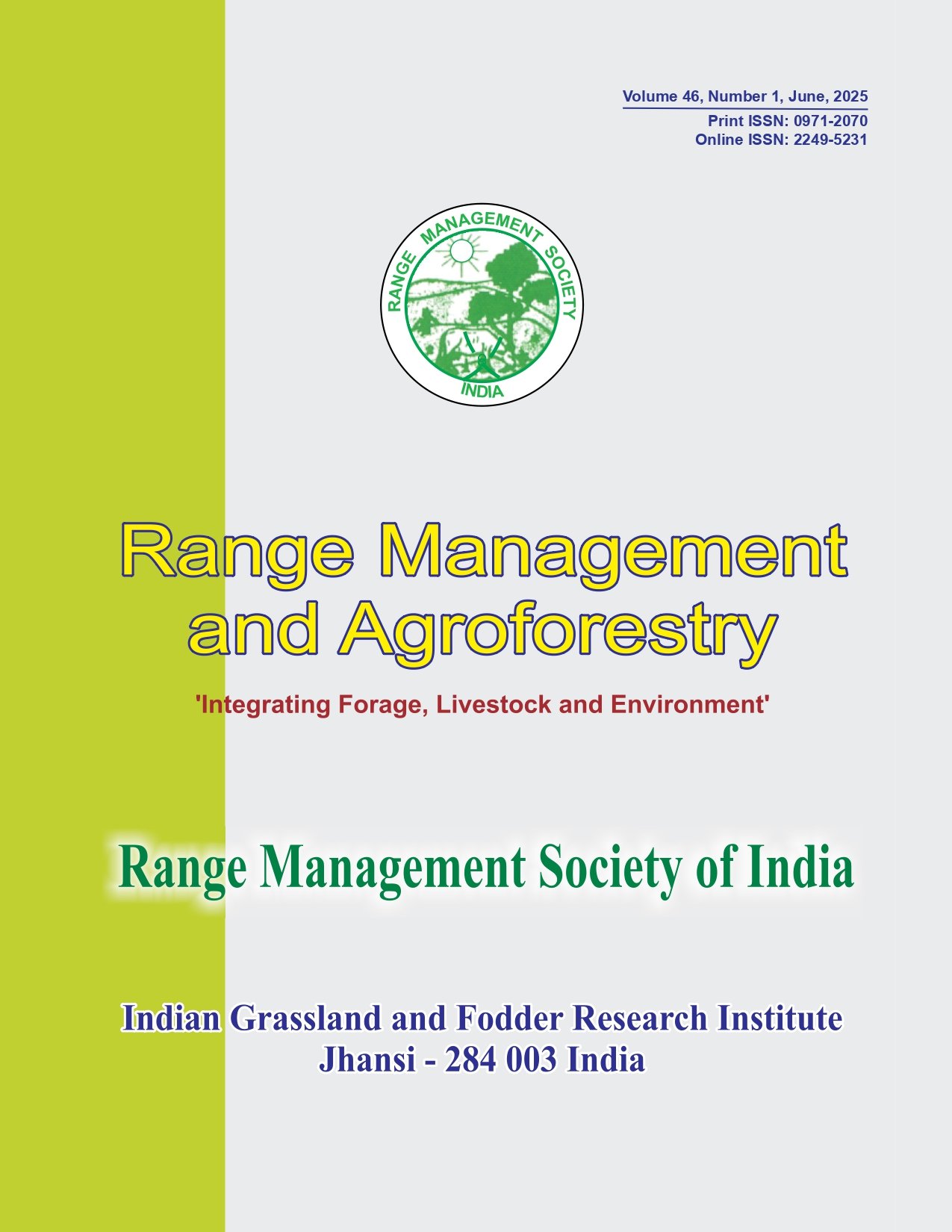Effect of grazing on carbon stock and biomass production in temperate grassland of Kashmir, India
Keywords:
Biomass, Carbon stock, Grassland, Grazing, SeasonsAbstract
Effect of grazing on the biomass production and total carbon stock was assessed in Gulmarg grassland of Kashmir under three prominent seasons. Investigation revealed that aboveground and belowground dry biomass was highest in summer season and lowest in autumn season at both sites in all the three investigated seasons. Protected site showed higher dry biomass production (4.15 t ha-1) as compared to grazed site (0.39 t ha-1), which was more prone to overgrazing and anthropogenic disturbances. However, higher concentration (2.96%) of soil organic carbon was recorded in autumn season at the protected site and lowest (1.15%) in summer season at grazed site. Total carbon stock was recorded highest (59.86 t ha-1) in autumn season at protected site and lowest (23.81 t ha-1) in summer season at grazed site. Decreasing trends in biomass and soil organic carbon of the grassland at grazed site as compared to protected site revealed that overgrazing and transhumance reduced species diversity and affected grassland productivity.




